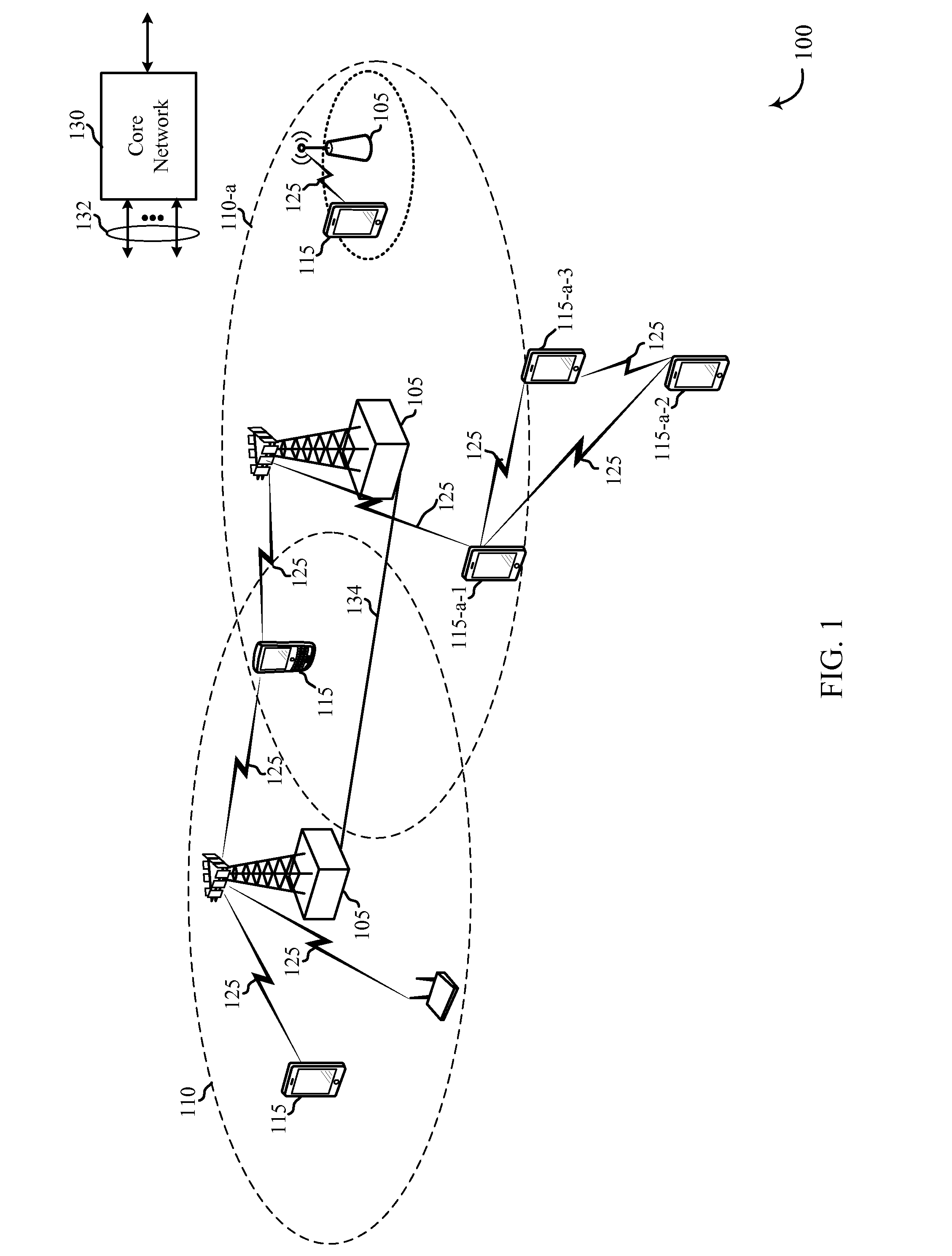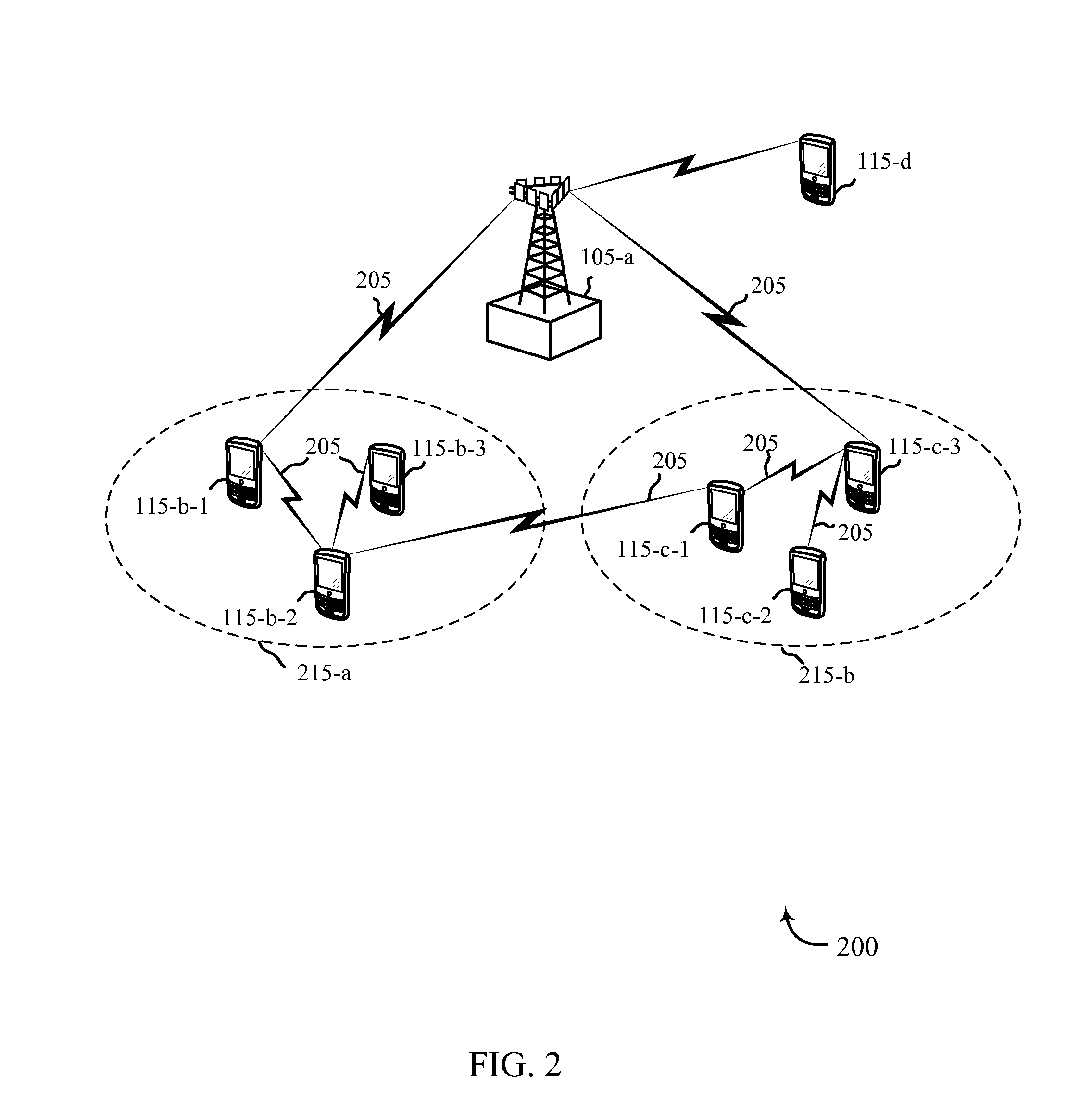Group priority handling for wireless communication
- Summary
- Abstract
- Description
- Claims
- Application Information
AI Technical Summary
Benefits of technology
Problems solved by technology
Method used
Image
Examples
Embodiment Construction
[0043]The described features generally relate to improved systems, methods, and / or apparatuses for reducing contention in a D2D wireless communication system. In an ad-hoc Mode 2 ProSe communication, a device (e.g., a UE) may experience contention for resources (e.g., transmission medium) from other UEs on the network. As a result of the contention between multiple UEs, the data packets scheduled for transmission by the device may be dropped from the medium. However, during a high priority communication such as emergency response coordination, it may be critical for certain users to ensure reliable access to the limited resources.
[0044]In accordance with the present disclosure, the resource contention among plurality of UEs may be reduced by limiting the number of UEs that may challenge for certain transmission resources. In some examples, one or more UEs may be assigned to different sets of groups based on device-specific identification. For instance, in some situations, an emergen...
PUM
 Login to View More
Login to View More Abstract
Description
Claims
Application Information
 Login to View More
Login to View More - R&D
- Intellectual Property
- Life Sciences
- Materials
- Tech Scout
- Unparalleled Data Quality
- Higher Quality Content
- 60% Fewer Hallucinations
Browse by: Latest US Patents, China's latest patents, Technical Efficacy Thesaurus, Application Domain, Technology Topic, Popular Technical Reports.
© 2025 PatSnap. All rights reserved.Legal|Privacy policy|Modern Slavery Act Transparency Statement|Sitemap|About US| Contact US: help@patsnap.com



